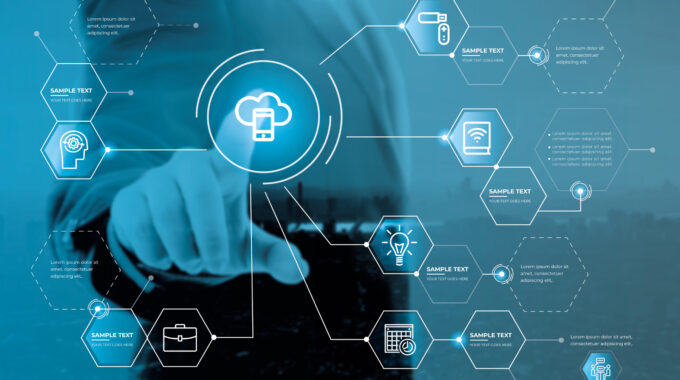Introduction In the dynamic landscape of small businesses, Point of Sale (POS) solutions emerge as…

Future-Proofing Your Business: A Deep Dive into POS Technology Trends in 2024
Introduction
In the relentless march of technology, staying ahead is not just an advantage; it’s a necessity. This white paper delves into the pivotal trends shaping Point of Sale (POS) technology in 2024, offering insights and strategies to future-proof your business in the dynamic world of retail.
The Evolving Landscape of POS Technology
A. Historical Context: From Cash Registers to Digital POS Systems
Understanding the historical trajectory of POS technology sets the stage for comprehending its current state and anticipating future developments. The evolution from manual cash registers to sophisticated digital POS systems mirrors the broader technological advancements in the retail sector.
B. The Current State: Touchscreens, Cloud Solutions, and Integrations
As of 2024, POS technology is characterized by touchscreen interfaces, cloud-based solutions, and seamless integrations with various business functions. However, the pace of innovation is accelerating, promising a future that goes beyond the current capabilities.
AI and Machine Learning Integration
A. Personalizing Customer Experiences through AI
The infusion of Artificial Intelligence (AI) and machine learning promises a paradigm shift in customer interactions at the point of sale. Businesses can leverage predictive analytics and behavior analysis to tailor offerings, providing customers with personalized and engaging experiences.
B. Intelligent Inventory Management with Predictive Algorithms
AI-driven algorithms are set to redefine inventory management. Predicting demand patterns and automating restocking processes, these systems not only reduce operational overhead but ensure businesses maintain optimal stock levels, contributing to enhanced efficiency.
Contactless and Mobile Payments
A. The Surge of Contactless Transactions
Contactless payments have witnessed an unprecedented surge in popularity, driven by both convenience and hygiene considerations. In 2024, POS systems are expected to seamlessly integrate contactless payment options, offering customers a frictionless transaction experience.
B. Mobile Wallets and App Integrations Revolutionizing Payments
The integration of mobile wallets and dedicated apps into POS systems is reshaping the payments landscape. This trend facilitates a seamless and secure payment ecosystem, catering to the preferences of the growing population of users who prefer digital transactions.
Blockchain Technology in POS
A. Decentralization for Trust and Transparency
Blockchain technology, known for its decentralized and secure nature, is finding applications in POS systems. From enhancing transaction security to providing transparent supply chain tracking, blockchain has the potential to revolutionize the trustworthiness of retail transactions.
B. Cryptocurrency Integration in Transactions
As cryptocurrencies gain wider acceptance, POS systems are adapting to facilitate cryptocurrency transactions. This forward-looking trend caters to a growing segment of consumers who prefer the flexibility and security offered by digital currencies.
IoT Integration for Smart Retail
A. Enhanced Customer Experience through Connected Devices
The Internet of Things (IoT) is ushering in an era of smart retail. Connected devices like smart shelves and beacons enhance customer experiences by providing real-time information and personalized offers, blurring the lines between the physical and digital realms.
B. Streamlining Operations with IoT Efficiency
Beyond customer-facing applications, IoT is optimizing behind-the-scenes operations. From real-time inventory tracking to monitoring equipment health, businesses can leverage IoT to streamline processes, increase operational efficiency, and reduce costs.
Cloud-Based POS Solutions
A. Unparalleled Flexibility and Scalability
Cloud-based POS solutions are becoming increasingly popular for their unparalleled flexibility and scalability. In 2024, businesses are adopting these systems, allowing real-time data access, seamless updates, and the ability to scale operations with ease.
B. Ensuring Data Security in the Cloud
While cloud-based solutions offer agility, data security remains a paramount concern. Advanced encryption protocols and compliance measures ensure that sensitive customer information is protected in the cloud, bolstering trust and mitigating risks.
Augmented Reality (AR) in Retail
A. Elevating the Shopping Experience with AR Applications
Augmented Reality (AR) applications in POS technology go beyond mere novelties. In 2024, businesses are leveraging AR to enhance the shopping experience, allowing customers to virtually try products before making purchase decisions.
B. Visual Merchandising and Advertising Redefined
AR extends to visual merchandising and advertising, enabling businesses to create immersive and interactive displays. This not only attracts attention but also provides valuable insights into customer preferences, shaping future marketing strategies.
Cybersecurity Measures in POS Technology
A. Proactive Threat Detection and Mitigation
As POS systems become more interconnected, the risk of cybersecurity threats increases. Businesses are implementing proactive threat detection mechanisms, leveraging AI to identify and neutralize potential security breaches before they escalate.
B. Employee Training for Cybersecurity Awareness
Recognizing that human error is a significant factor in cybersecurity incidents, businesses are investing in comprehensive employee training programs. Creating a culture of cybersecurity awareness is crucial for safeguarding sensitive data and maintaining the integrity of POS systems.
Customization and Adaptability
A. Tailoring POS Systems to Specific Business Needs
One size does not fit all in POS technology. Businesses are leaning towards customizable POS solutions, allowing them to tailor the system to their specific needs, whether it’s industry-specific features or unique integrations.
B. Adapting to Changing Consumer Behavior
Consumer preferences and behaviors evolve rapidly. Future-proof POS systems are designed to adapt to these changes, ensuring that businesses can pivot quickly to meet shifting market demands and remain relevant to their customer base.
Regulatory Compliance and POS Technology
A. Adherence to Data Protection Laws and Ethical Considerations
The regulatory landscape surrounding data protection is evolving globally. POS systems must align with these regulations to ensure the lawful and ethical handling of customer data, protecting businesses from legal repercussions and building trust with customers.
The Human Element in Future POS Technology
A. Empowering Staff through Technology
While technology plays a pivotal role, the human element remains irreplaceable. Future POS systems empower staff by automating routine tasks, allowing them to focus on providing exceptional customer service and fostering meaningful customer relationships.
B. Staff Training for Tech Proficiency
Ensuring that staff is proficient in utilizing advanced POS technology is crucial. Ongoing training programs are essential to harness the full potential of these systems, optimize operations, and deliver an optimal customer experience.
Environmental Sustainability in POS Technology
A. Green Technologies and Energy Efficiency
Sustainability is a growing concern, and POS technology is not exempt. Future POS systems incorporate green technologies and energy-efficient components, aligning with businesses’ commitment to environmental responsibility.
B. Paperless Transactions and Receipts for a Sustainable Future
The move towards paperless transactions and receipts contributes to a more sustainable and eco-friendly retail environment. Digital receipts and electronic invoicing reduce environmental impact, aligning with global sustainability goals.
Conclusion
In navigating the landscape of POS technology trends in 2024, businesses have a unique opportunity not only to stay competitive but to redefine the retail experience. Future-proofing operations requires a strategic and proactive approach that embraces innovation, prioritizes customer experience, and safeguards against emerging challenges. By staying abreast of these trends and integrating technology thoughtfully, businesses can position themselves as leaders in the dynamic and evolving realm of retail, ready to meet the demands of the future with resilience and agility.




